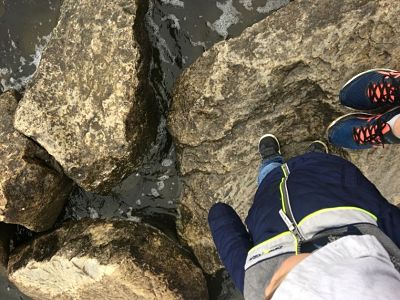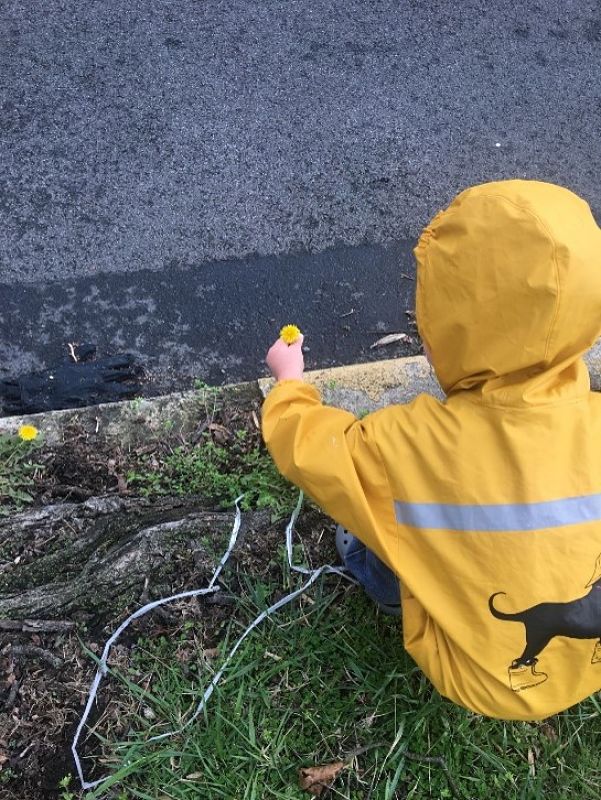Getting Our Students Outside Every Day: Part 2
★★★★☆
 If you have missed Part 1, you may want to read that before delving into this post. Within that post, we looked at the differences between the way American parents and educators seem to view outdoor play for children in contrast to the way it is viewed within harsher climates such as the Scandinavian countries. Using McGurk’s research in There’s No Such Thing as Bad Weather, I am writing this post as an encouragement for you as an educator to make better use of God’s creation within the hours you are entrusted with a child’s education and development.
If you have missed Part 1, you may want to read that before delving into this post. Within that post, we looked at the differences between the way American parents and educators seem to view outdoor play for children in contrast to the way it is viewed within harsher climates such as the Scandinavian countries. Using McGurk’s research in There’s No Such Thing as Bad Weather, I am writing this post as an encouragement for you as an educator to make better use of God’s creation within the hours you are entrusted with a child’s education and development.
Outdoor Play and Childhood Health
We all know that physical exercise is beneficial for children, but many of us see indoor exercise as being equivalent in benefits to outdoor exercise. And this is where we are wrong according to studies done by a research team in Sweden. After comparing children at nine different preschools, they found that the more varied and versatile the outdoor environment is, the longer children will stay outside and the more active they will be. According to their research, the places with plenty of trees, shrubs, rocks, and hills also had children with normal body mass instead of the children being overweight. (122) A 2011 study of children in Missouri showed that both genders take more steps and work up higher heart rates when recess is held outside instead of in a gym or classroom. (84-85) In the past, most of our private Mennonite schools did not have the resources or finances to build a gym for the children. However, as of late, more and more schools are choosing to build gyms for their students to spend their recess of time of physical education. When looking at children’s play from a health perspective, we do not seem to be doing our children a favor by having them spend the majority of their active hours indoors instead of outdoors.
Further, a study by the University of Copenhagen showed that the children who played freely outdoors got more exercise than when they participated in organized sports. (122) In contrast to these studies, we have seen childhood obesity continue to rise in America. Instead of only attacking the processed foods and unhealthy diets, can we simply encourage our children to spend more time playing outdoors? Studies have shown that children who are active in school are more likely to stay active after school as well; and of course, the reverse is also true.
Today, about one in ten children within the US suffers from asthma and as many as forty percent have been diagnosed with allergies. In contrast, asthma and allergy remain very rare conditions in many poorer, less-developed countries. Many researchers believe that smaller family sizes, increased antibiotics use, less contact with animals, more time spent indoors, and an obsession with cleanliness have all contributed to our immune systems slacking off in the past fifty years. Many parents (and certainly it is more true today due to COVID-19 than any other time) believe that bacteria and germs are found on playground equipment in parks. And certainly, it is true but are these germs and bacteria so dangerous? Sometimes, we perceive that all germs are bad and should be eliminated at any cost with a bucket of bleach or at the very least, hand sanitizer. Yet, in reality, it seems that our modern, sanitized lifestyle has wiped out a lot of beneficial microbes in our gut that actually help us stay healthy. When we are exposed to certain microbes in the womb and early childhood, that exposure can actually the immune system and protect from illnesses later on. It is when the immune system is not challenged enough, that it might start looking for stuff to do, like overacting to things that are not really dangerous such as pollen and peanuts. (p.181)
While scientists do not know exactly what type of dirt can help protect us but some speculate that by simply being more removed from nature has become the main reason for the epidemic. Perhaps an easier way to support children’s health could be by allowing them to play outside as much as possible and not panic when they eat dirt or lick an earthworm. (185) Scientists have found that the mycobacterium vaccae (a type of bacteria that is found in dirt) is beneficial to health. In a research study, it was found that Amish children as well as children who live in poorer and dirtier conditions had a greater exposure to it than children in most developed countries. (182-184) Another study was done on mice showing that mice that were exposed to the M. vaccae did better than those who weren’t. Scientists believe that the M. vaccae may decrease anxiety and improve the ability to learn new tasks. (183) In fact, according to The Dirt Cure: Growing Healthy Kids with Food Straight from the Soil, “Bacteria, viruses, parasites, and fungi play a critical role in developing and maintaining a healthy gut and immune system. Playing outside, digging for worms, planting vegetables, and essentially coming into contact with plenty of dirt and livestock are actually good things. Not just good – essential.” (184)
McGurk’s research shows there are many other health benefits of outdoor recess. The fresh air helps to oxygenate the cells with fresh air which in turn makes one feel more energetic and alive. Also, several studies have shown that outdoor recess can help prevent nearsightedness because children’s eyes need bright, natural light to develop appropriately. An educator confided to McGurk, “We’ve never had to explain to a parent why the kids are outside. Everybody understands that it’s good for them – the fresh air, the big space. There are fewer conflicts and infections, because the kids are not on top of each other all the time. We may have had a couple cases of stomach flu but we don’t get the epidemics that other places have. There’s also less noise. We see a lot of advantages of being outside.” (84)
 Outdoor Play and Childhood Development
Outdoor Play and Childhood Development
In addition to health benefits, outdoor play has also shown to greatly benefit childhood development. In a study done by a kindergarten teacher comparing the differences between richly stimulating outdoor environments, found that “those who played in a forest daily had significantly better balance and coordination than children who only played on a traditional playground. Once again, the reason is believed to be that children are faced with more complex physical challenges in nature, and that this boosts their motor skills and overall fitness.” Again, not all exercise seems to be created equal and not even all outdoor activities seem to be of equal importance. She went on to say that children who spend a lot of time in nature have stronger hands, arms, and legs and significantly better balance than children who rarely get to move freely in natural areas. In nature children use and exercise their joints and muscles, if only given the opportunity.” (123)
Outdoor play is also the ultimate sensory experience. Barefoot running, sinking into mud, listening to birds, and feeling raindrops are all part of stimulating sensory integration. In a country like America where autism and ADHD is on the steady rise in contrast to children in Norway who are spending more time outdoors (89), any research pertaining good sensory integration is important. Sensory integration relates to the body’s ability to process and organize information that is received through the senses. There are certain parts of the brain that are stimulated when interacting in a varied environment. (141-142)
Stay tuned for Part 3 which will reflect on how we should be approaching nature as Christians. The post will also give you several practical ideas on ways you can make use of the great outdoors with your students. Sources:MCGURK, L. K. (2018). THERE’S NO SUCH THING AS BAD WEATHER: A Scandinavian mom’s secrets for raising healthy, … resilient, and confident kids. SIMON & SCHUSTER.
Leave a Reply